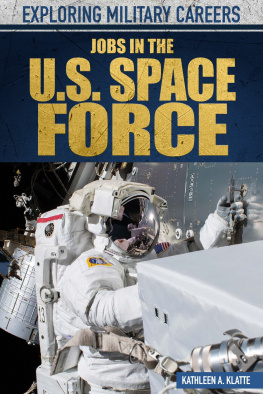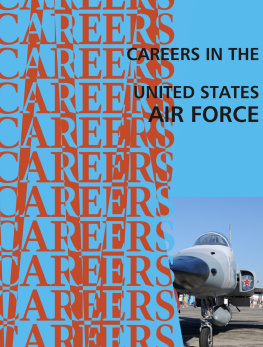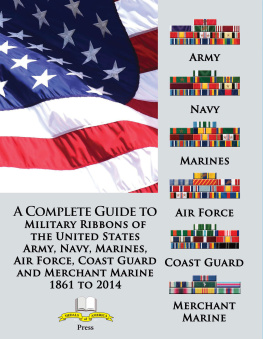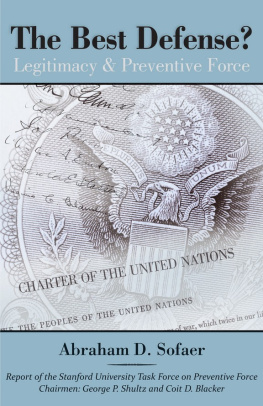THE U.S. SPACE FORCE
E veryone knows the stories and legends of the minutemen and colonial militia during the American Revolution. However, by the mid-18th century, most nations maintained professional armies and navies. If the American colonies were to have any chance at becoming a secure, sovereign nation, they would need armed forces of their own. So, on June 14, 1775even before the Declaration of Independence was writtenthe Continental Congress formed the Continental Army.

Alan Shepard was the first American in space. Anyone with the "right stuff to follow in his footsteps can find an exciting career in the U.S. Space Force.
The concepts of fighting sea vessels and soldiers trained to fight on ships or on land were well understood at the time. The U.S. Navy and Marine Corps were also established in 1775. In 1789, the new U.S. Congress created the Department of War-part of the executive branch of the government-to oversee the armed forces. The precursor of the modern Coast Guard was created in 1790. Service academies to train officers were established, beginning with the United States Military Academy at West Point in 1802.
Over time, the U.S. military has adapted to evolving technology. On land, horses gave way to motor vehicles and eventually armored tanks. At sea, wooden-hulled sailing ships were replaced by ironclad steamships and submarines. Still, these were evolutions of fighting on land and sea, which were familiar battlegrounds after decades of war.
At the beginning of the 20th century, an entirely new dimension was introduced: flight. The Wright brothers first flight occurred in 1903, and in 1907, the U.S. Army organized the Aeronautical Division to take charge of military applications of flight with balloons, planes, and other early aircraft. In 1910, the U.S. Navy began investigating the possibility of launching aircraft from ships. The navys initial interest in aviation would eventually result in todays enormous nuclear-powered aircraft carriers, which carry a crew of thousands and have the ability to launch and land jet aircraft. The armys flight program would become the Army Air Corps, which would eventually become the United States Air Force.
In 1947, the U.S. Air Force was created as a separate branch of the military to take charge of air combat operations. The U.S. Air Force Academy was founded in 1954. During the 1950s and 1960s, the U.S. Air Force conducted extensive testing to create aircraft that could travel faster than the speed of sound.
Over time, the domain of the air began to include space. The air force was involved in research to create a reusable space plane. Long-range missiles became worldwide weapons during the Cold War, and there was an increased reliance on satellites for communications and intelligence gathering. In 1982, the Air Force Space Command was created to unify military space operations. In 2005, its operations expanded to include yet another new realm: cyberspace.
By the beginning of the 21st century, space operations had expanded to include civilian as well as military and government projects and assets. Many functions critical to civilian life depend on assets in space and the flow of information through cyberspace. As a result, it was decided that a new, separate branch of the military was needed.
AIR FORCE SPACE COMMAND
The Air Force Space Command (AFSPC) was established in 1982. It was headquartered at Peterson AFB in Colorado. AFSPC had command and control of all Department of Defense satellites. In addition, it monitored radar and satellite early warning systems in case of a long-range missile attack.
In 1991, AFSPC provided support for other branches of the military involved in Operation Desert Storm. Following the 9/11 terrorist attacks, AFSPC provided intelligence and other data to aid in troop deployments and attack plans. Satellites were used to gather weather information and topographical data to help determine the best timing and placement of ground troops and assets. Keyhole satellite images were also used to see where enemy troops and weapons were placed.
AFSPCs scope expanded to include cyberspace in 2005. The military has always required security in its communications. Battle plans, troop movements, and state secrets have always needed to be protected. However, now the orderly function of civilian society also depends on cybersecurity. Banking, communications, and daily commercial activity all rely on satellites and the internet.
As of 2019, the AFSpC has become the core of the new U.S. Space Force. Its mission is to protect and defend U.S. interests in both space and cyberspace.
A NEW MODERN BRANCH
The United States Space Force (USSF) is the newest branch of the armed services. It was formed on December 20, 2019, as part of the National Defense Authorization Act and was signed into law by President Donald Trump. It is the first new branch of the armed forces to be established in 73 years. Many young people have big dreams of working in the United States space program. Many also feel a call to protect and defend their country. For these young people, the USSF is a dream come true.
The first chief of space operations was General Jay Raymond. He was appointed by the president. The first senior enlisted adviser was Chief Master Sergeant Roger Towberman. The USSF is headquartered in the Pentagon, along with the other branches of the armed forces. When the USSF was established, some air force basesinduding Vandenberg Air Force Basewere redesignated as Space Command Bases. The USSF was given an operating budget of about $17 billion.
Each branch of the U.S. armed forces has its own distinctive symbol. The symbol of the USSF is called the Delta. It is a design that looks something like an arrowhead. The outer edge is silver, symbolizing protection. The inside is black to symbolize space. Two spires represent a rocket launching. Four segments symbolize the U.S. Army, Navy, Air Force, and Marine Corps working together to protect space. In the center is the star Polaris, symbolizing the core values that drive the USSF.
The design for the U.S. Space Force official seal was approved by President Trump in January 2020. The motto of the USSF is Semper Supra, Latin for Always Above. The Delta appears on the USSF flag with the date 2019 in Roman numerals, reflecting the year that the USSF was established.
The USSF was formed from the Air Force Space Command (AFSPC), which was initially tasked with deploying and monitoring satellite activity. Its scope expanded to include command and control of Americas nuclear missile arsenal and cyberspace security. Initially, 16,000 personnel were transferred from the Air Force Space Command to the USSF. The young USSF remains associated with the air force, similar to the Marine Corpss affiliation with the navy.

This is the flag of the United States Space Force. It is dated 2019, the year the USSF was officially established.
For centuries, the United States armed forces have defended the nation with distinction, first on land and sea, and later in the air. Now the United States faces a new challenge-defending U.S. interests in space. Though alien invaders are still firmly in the realm of science fiction, American communications and defense rely on satellites that orbit Earth. Protecting these satellites is a key part of preserving modern society. Think what might happen if there were suddenly no television broadcasts or phone communication. What if there were no GPS navigation systems? What if Wall Streets computer systems stopped working? The chaos would be unimaginable.
















